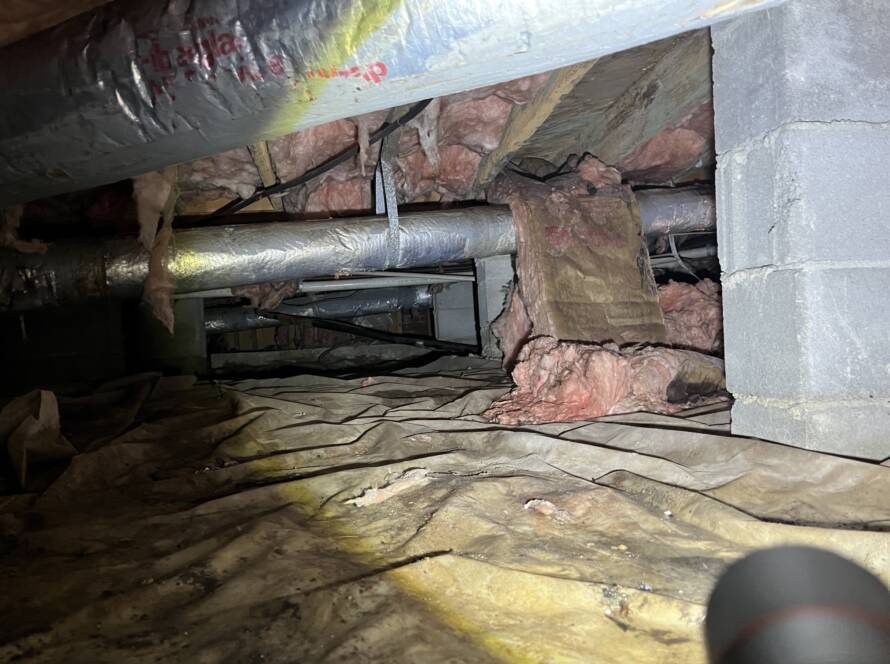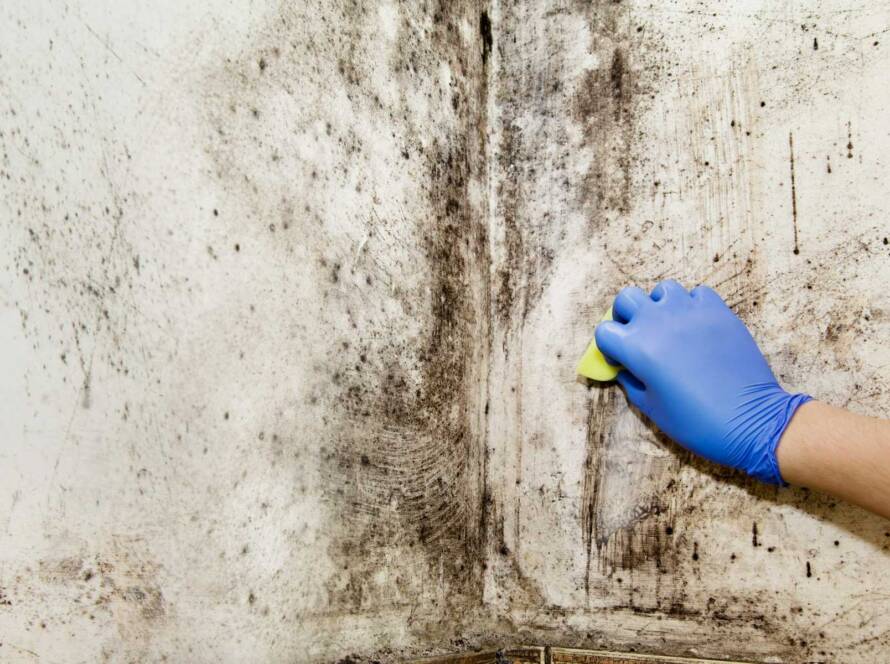Simple Steps to Prepare Your Home for Storms and Hurricanes in the Lowcountry
With its charming coastal views and historical allure, the Lowcountry is truly a gem. However, living in the picturesque region around Charleston, SC, means facing the ever-present risk of storms and hurricanes. Preparing your home for these weather events isn’t just a precaution; it’s a necessity. Without the proper preparation, your home and property could suffer significant water damage and/or structural damage leading to even bigger headaches, like loss of personal items and pricey repairs.
Here’s how you can safeguard your home against storm and water damage.
1. Evaluate Your Surroundings
First, take a good look at your property.
Are there trees with overhanging branches near your home? Trim them. These could break off in high winds causing roof and property damage. Many tree trimming companies provide storm preparation consultations. They will be able to tell you, based on the types of trees on your property, which ones pose the greatest risk of damaging your home.
Is your drainage system up to par? Flooding can be a significant issue, especially in the already low-lying areas surrounding Charleston, and a clogged gutter could spell disaster. Make sure your gutters are thoroughly cleared. If you don’t want to climb a ladder, there are companies that will not only clean your gutters and downspouts but also install a system to make sure they stay clear year round. With the amount of storms that roll through the Lowcountry, this is a worthwhile investment if your property has a lot of trees dropping leaves and seeds on your roof every year.

Do you have free-standing outdoor decor? Small rocks, bricks, and decorative items might seem harmless, but they can cause significant damage during a hurricane. To mitigate this risk, replace loose materials with mulch or other lightweight, non-projectile options. Ensure all garden decorations are securely anchored or stored indoors. Protect your home and property from the devastating effects of flying debris during a storm.
Next, check with your neighbors. Talk with your neighbors if you notice items in their yards that could potentially damage your home. Offering to give them a hand securing any items they need help moving or tying down is a great way to bring attention to potential safety issues they may not be thinking about.
2. Check Your Roof
The height of the ceilings was a particular challenge in this home. Our team had to use scaffolding in order to access all the hard-to-reach areas. When we opened the drywall, we discovered there had in fact been a bat infestation. Bats had deposited droppings throughout the space which caused the smell permeating the home. Their damage to the insulation and drywall allowed moisture to accumulate and cause mold to grow on the ceiling surfaces.
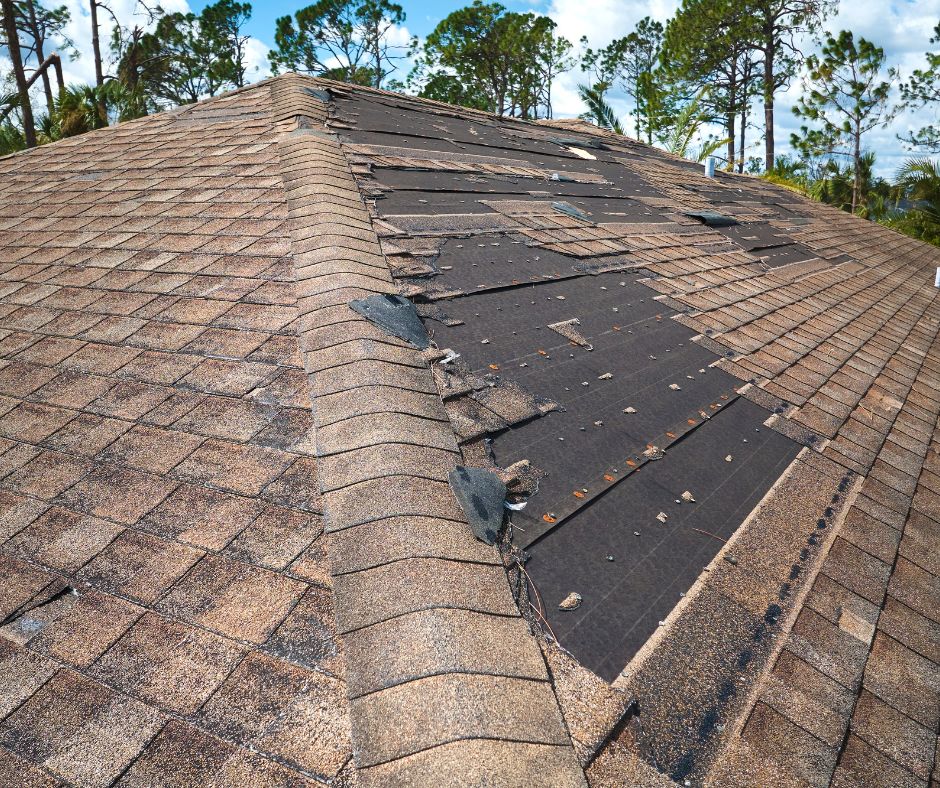
3. Secure Loose Items Outdoors
Patio furniture, garden tools, bird feeders, solar powered landscape lighting that is not permanently fixed, and any other loose items can become deadly missiles in hurricane-force winds. Bring these items indoors well before the storm hits. For larger items that can’t be moved, such as grills, basketball nets, or playground equipment, ensure they are laid down and/or anchored securely to the ground.
4. Fortify Your Windows and Doors
Your windows and doors are the most vulnerable points during a storm. Install storm shutters or at least have plywood ready to board up the windows. Reinforce your doors with heavy-duty bolts and braces. Consider upgrading to impact-resistant windows and doors if you haven’t already.
Any broken windows or sliding can lead to water damage in the home. Water damage often leads to a host of other problems beyond the already devastating property loss. Taken care of properly, all of the water-logged furniture, carpet, drywall, siding, and decor will need to be removed and replaced. The space must be aired out and completely dried to prevent malodor or mold growth in the home.
Call the restoration experts at BioSweep SE today. 843-375-6627
5. Strengthen Your Garage Door
Garage doors are often overlooked, but they can be a weak point in high winds. Reinforce your garage door with braces or upgrade to a wind-rated door. This will prevent it from buckling under pressure and causing further structural damage to your home.
6. Seal Gaps and Cracks
Water can enter your home through even the smallest gaps and cracks. Inspect your home’s exterior, paying special attention to areas around windows, doors, and utility penetrations. Use caulk and weatherstripping to seal any openings and prevent water intrusion.
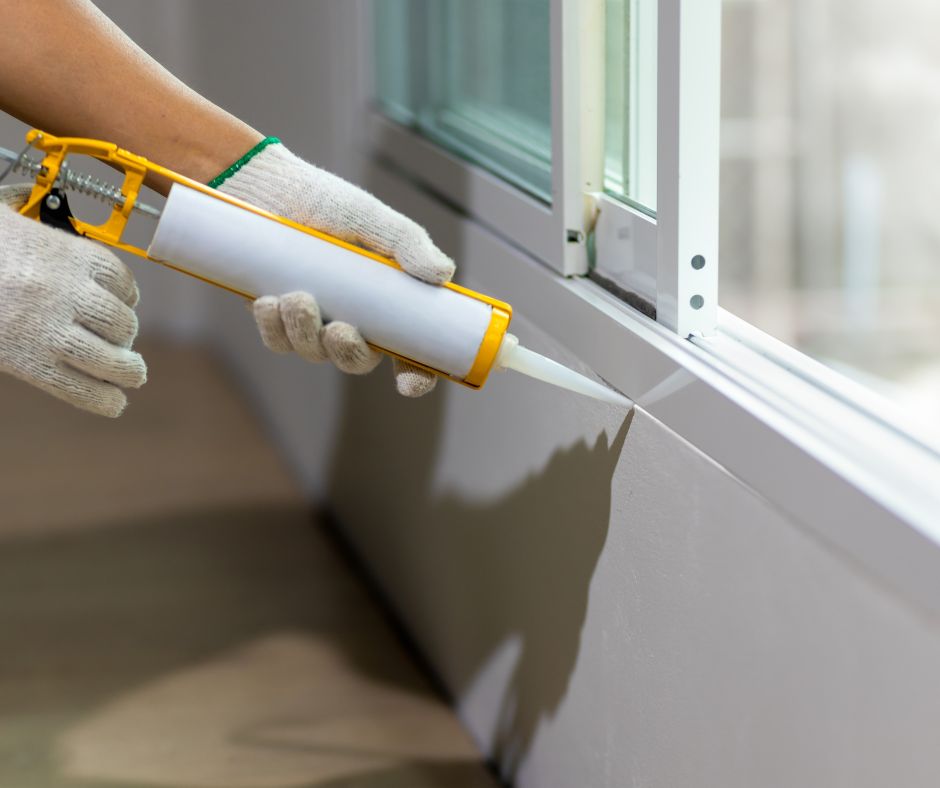
If your town or community provides sandbags, take advantage of this resource to further protect your home during storms and hurricanes. Place sandbags around doorways, garage entrances, and any other potential entry points where water might seep into your home. Stack them in a staggered, brick-like pattern to create the most effective barrier. If your property has areas that are prone to pooling or flooding, position sandbags to divert water flow away from these vulnerable spots. This includes around the perimeter of your home, near windows, and basement access points. When filling sandbags, fill them halfway to two-thirds full. This allows them to be stacked more easily and conform better to each other, creating a tighter seal.
7. Protect Important Documents and Valuables
After fully inspecting the exterior of your home, move inside and make sure to protect your essential documents and valuables. Store them in a waterproof and fireproof safe so even if your home sustains damage, your important items are protected.
8. Review Your Insurance Coverage
While you’re securing your important documents, review your homeowner’s insurance policy to ensure you have adequate coverage. Standard policies may not cover flood damage, so consider adding flood insurance, especially since the Lowcountry is prone to flooding. Make sure you understand what is and isn’t covered, and document your belongings with photos or videos for potential claims.
9. Locate Water, Electricity, and Gas Shutoffs
It’s critical to know where your utility shut offs are located. Before there is a threat of a storm, identify the shutoff valves for water, electricity, and gas, and make sure everyone in your household knows how to turn them off. Label the shutoff points clearly and keep a wrench or any necessary tools nearby for quick access. Manually shutting off utilities can prevent further damage if something happens during or after a storm.



10. Install Surge Protectors
Power surges are common during storms, and they can wreak havoc on your home’s electrical system. Install surge protectors to safeguard your appliances and electronics. Whole-house surge protection is the best option, but individual protectors for key devices are a good start.
11. Prepare for Power Outages
Power outages, as well, are almost inevitable during severe storms. The use of candles and other alternative light and heat sources during a power outage can increase the risk of fire. Instead, stock up on batteries, flashlights, and portable chargers. Having a generator can be a game-changer in such situations, but remember to use it safely and never indoors to avoid carbon monoxide poisoning.
Keep in mind power outages often disable home security systems, leaving your home vulnerable to break-ins, and other security risks. Have alternative ways to safeguard your home should your security system go offline.
12. Emergency Kit and Plan
Every household needs an emergency kit, packed with essentials like water, non-perishable food, medications, first-aid supplies, and useful tools. A manual can opener, utility knife or multi tool, duct tape, and a fire extinguisher are just a few essential items to keep on hand. Tarps and plastic sheeting can be helpful for temporary roof repairs or covering damaged areas to prevent further water damage. It doesn’t hurt to have a chainsaw and extra gas on hand in case you have to clear a path on the road to evacuate.
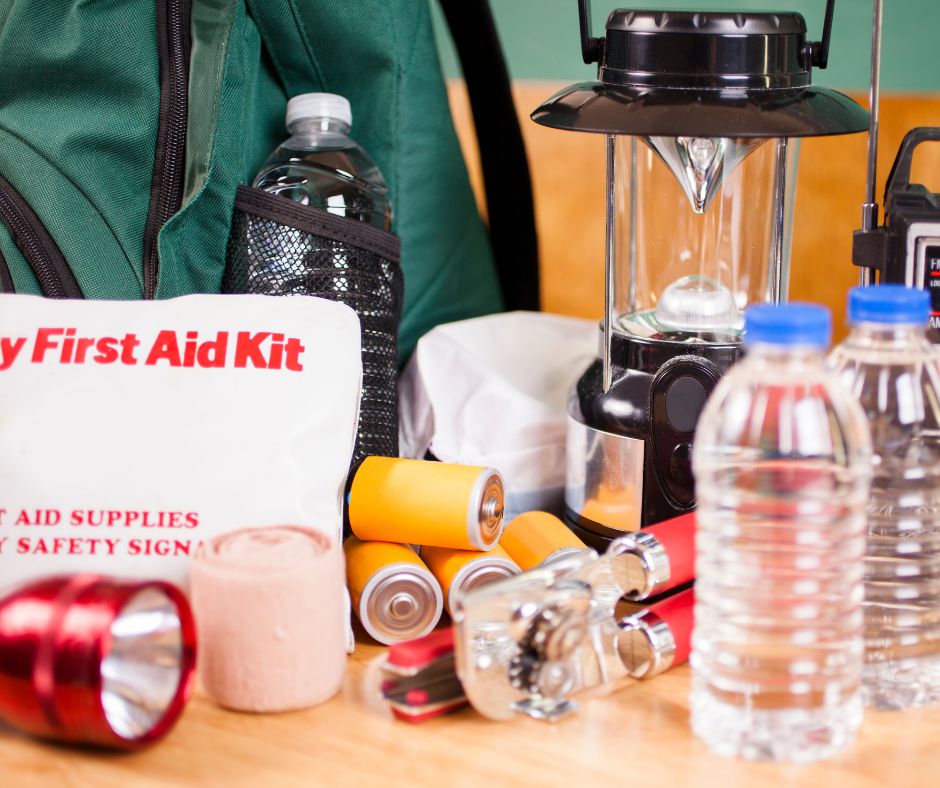
Even more important, make sure everyone in your household knows the emergency plan. What will each person need to do in case of an emergency? Where will you go if you need to evacuate? How will you communicate?
13. Create Your Personal Storm Preparation Checklist
When an emergency takes place the stress makes it easy to forget things. Make a checklist while the skies are clear to ensure nothing gets overlooked. You can start your own for the helpful points included here or use a premade checklist found online, and then add any details that are unique to you, your family, and your property.
Your Family. Prepared.
Preparing your home for storms and hurricanes in the Lowcountry is about more than immediate protection; it’s about peace of mind and damage prevention. By taking these steps, you can minimize property damage and recover more quickly when storms strike. Start early, stay vigilant, and ensure your home is as storm-ready as possible. This preparation will provide peace of mind, knowing you’ve done everything possible to safeguard your home against nature’s unpredictable forces.
If you’ve suffered storm or water damage in the Southeast, reach out today for a quote. Our restoration experts restore your home to its pre-storm condition and help home feel like home again.

